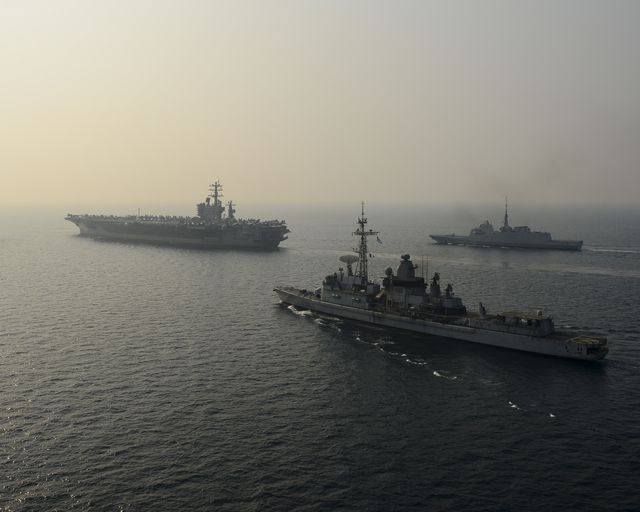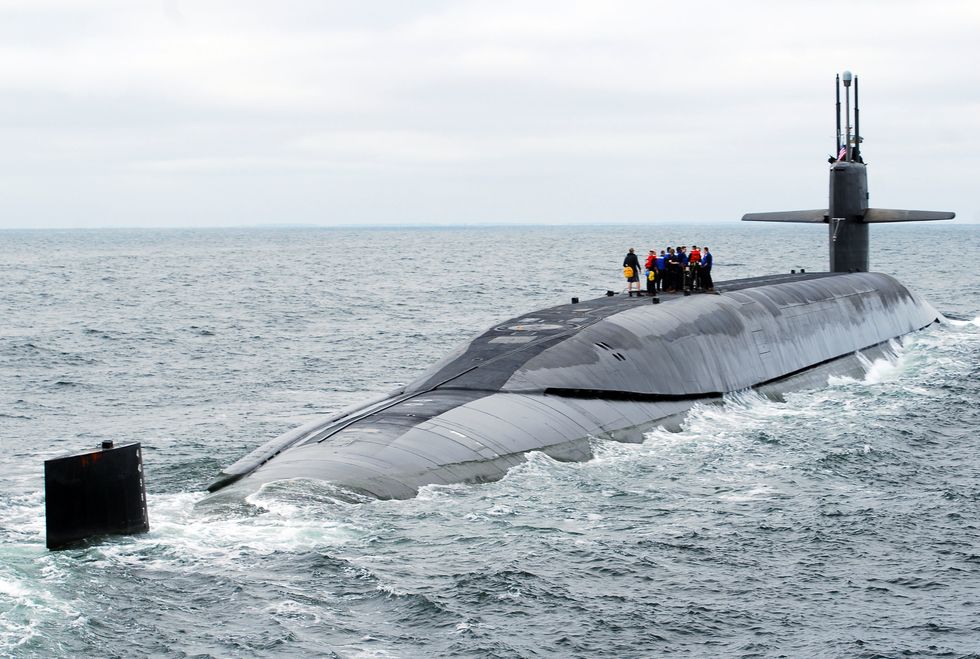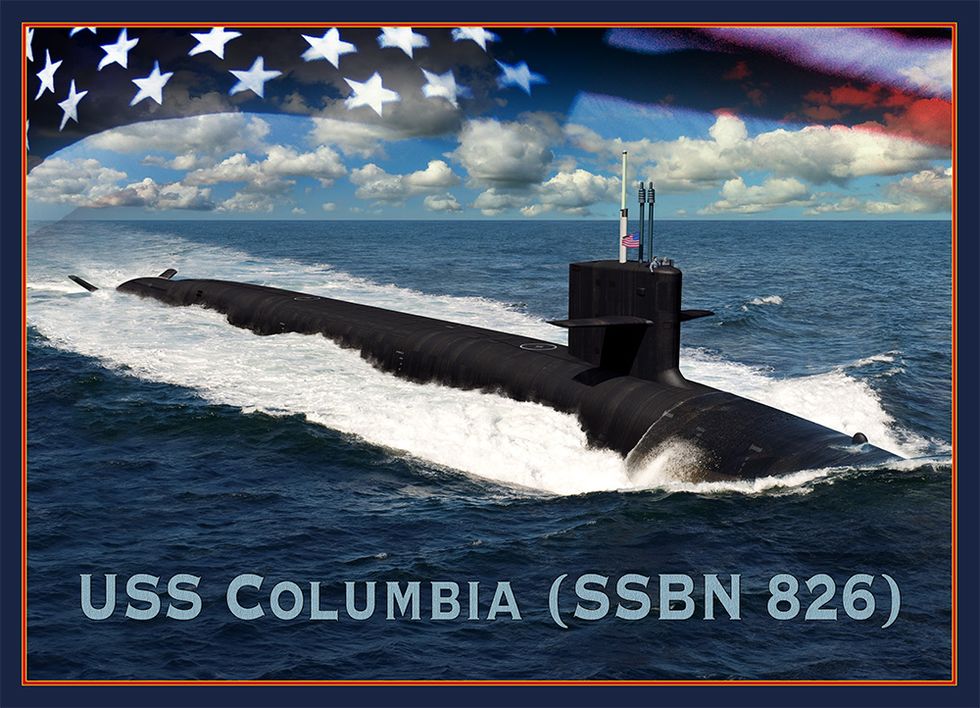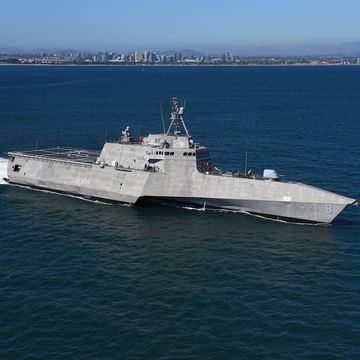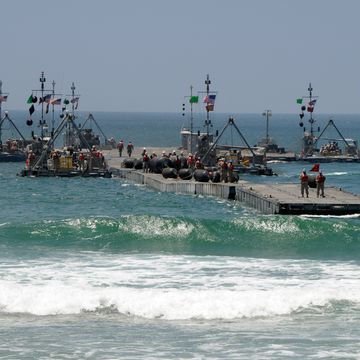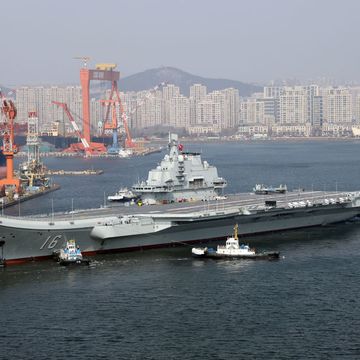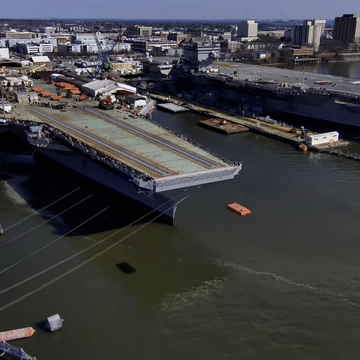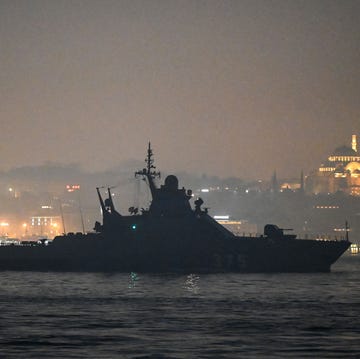The U.S. Navy may have a tough choice to make: prioritizing growing its fleet of warships or funding the next generation of nuclear ballistic missile submarines. The Navy has made growing the size of the overall fleet to 355 ships a major priority, while at the same time building the new Columbia-class ballistic missile submarines. Meanwhile, the service is also being warned that the Pentagon’s defense budget will start shrinking in fiscal year 2020, making the two priorities in the eyes of many analysts an either/or proposition.
The U.S. Navy currently stands at 287 warships, a number it considers too small to deal with overseas contingencies and naval threats from Russia and China. The service would like to grow to 355 warships, a process that would cost billions of dollars above the current shipbuilding budget over several decades. President Donald Trump campaigned on a promise to build the Navy up to 350 warships—a number the Navy quickly outdid by asking for 355 ships. In 2016, Popular Mechanics estimated the cost to build up the fleet to 350 ships at approximately $126 billion dollars, not including personnel costs or ballistic missile submarines.
Meanwhile, the Navy’s ballistic missile submarine fleet is due for a refresh. The older Ohio-class submarines, some of which are nearly forty years old, are expected to be replaced with the Columbia class, starting sometime in the late 2020s. The Navy will build 12 Columbia submarines, each carrying up to 16 nuclear-tipped missiles. The total cost for the submarine program: a whopping $128 billion.
In other words, tackling both programs could cost an eye-watering $254 billion dollars. Even spread out over 20 years, fulfilling both programs would cost an extra $13 billion a year over current shipbuilding levels.
At the same time, Trump’s short-lived defense budget increase is about to come to a screeching halt. According to USNI News, the Department of Defense was preparing to request $733 billion in 2020 but has now been told by the White House Office of Management and Budget to expect only $700 billion. The situation is complicated by a soaring national debt and the need for the service to commit to programs over several decades, through good economic times and bad.
The result: According to a panel of naval experts covered by USNI News, the service may have to choose between building up the fleet or building the next-generation missile sub. As one panelist put it, “We have to stop the notion we can have it all” when it comes to military and non-military spending.
If it comes down to it, the Navy may decide to to fund the Columbia-class submarines over growing the fleet. Nuclear deterrence is a key Navy mission, and submarine-launched ballistic missiles are considered invulnerable from surprise nuclear attack. As a result, they are the strongest deterrent against a first strike from a hostile power and probably the nuclear weapons safest from budget-cutters. Furthermore, they are the last operational nuclear weapons in the U.S. Navy, and if the Navy retires the Ohio-class boats without a replacement the service will effectively no longer have a nuclear mission.
Source: USNI News

Kyle Mizokami is a writer on defense and security issues and has been at Popular Mechanics since 2015. If it involves explosions or projectiles, he's generally in favor of it. Kyle’s articles have appeared at The Daily Beast, U.S. Naval Institute News, The Diplomat, Foreign Policy, Combat Aircraft Monthly, VICE News, and others. He lives in San Francisco.
